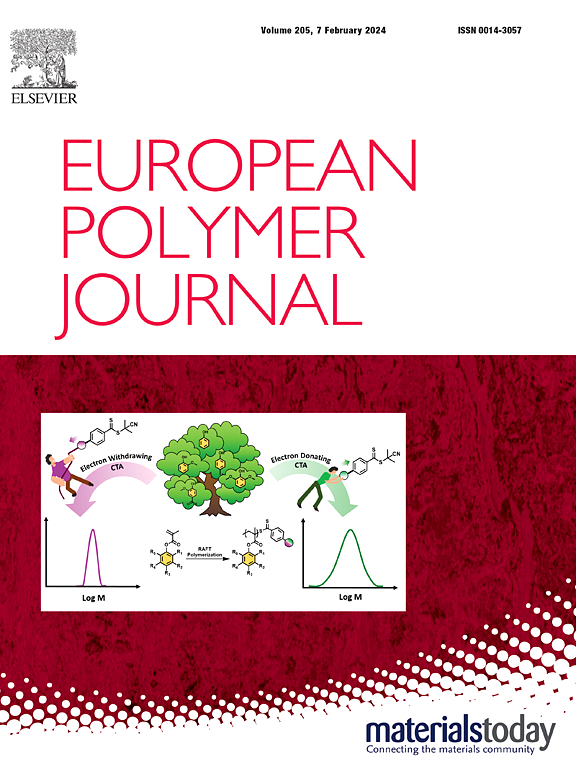From betulin potentially bioproduced from plastics wastes to sustainable and high-performance cycloaliphatic polyurethanes: Towards a Biotech-Chem approach
IF 5.8
2区 化学
Q1 POLYMER SCIENCE
引用次数: 0
Abstract
By combining biotechnology and chemistry, sustainable and high-performance thermoplastic polyurethanes (TPU) have been (bio)produced from different renewable carbon sources like biomass and plastic waste, in the frame of a circular (bio)-economy. The bioproduction of betulin (cycloaliphatic diol) using engineered baker's yeast (Saccharomyces cerevisiae) has been demonstrated from a model carbon source for plastic waste. Sustainable TPUs were synthesized in a two-step route with betulin as a chain extender (in different amounts), and with methylene diphenyl diisocyanate as an aromatic diisocyanate and different poly(tetrahydrofuran) (PTHF), as a sustainable long polyol, with varying molar masses. A specific study of betulin hydroxyl (OH) groups have been developed. To the best of our knowledge, such reactivities study had never been studied. It clearly shows the lower reactivity of the secondary OH group and the importance of temperature and catalyst content control on the urethane bond formation. The different obtained sustainable TPUs exhibited high thermal stability due to the specific betulin cycloaliphatic structure. TPUs with only high molar masses PTHF have achieved good phase segregation and elastomeric behavior. The sufficient distance among hard segments allowed interactions between them, reducing the affinity between hard and soft segments, with a specific organization based on phase separation. These TPUs offered adequate thermo-mechanical properties and processability, with stiffness and high Young’s modulus, for a large range of potential applications. Taking into account their architectures, the end of life of these sustainable thermoplastics is largely open to physical or chemical recycling approaches.

求助全文
约1分钟内获得全文
求助全文
来源期刊

European Polymer Journal
化学-高分子科学
CiteScore
9.90
自引率
10.00%
发文量
691
审稿时长
23 days
期刊介绍:
European Polymer Journal is dedicated to publishing work on fundamental and applied polymer chemistry and macromolecular materials. The journal covers all aspects of polymer synthesis, including polymerization mechanisms and chemical functional transformations, with a focus on novel polymers and the relationships between molecular structure and polymer properties. In addition, we welcome submissions on bio-based or renewable polymers, stimuli-responsive systems and polymer bio-hybrids. European Polymer Journal also publishes research on the biomedical application of polymers, including drug delivery and regenerative medicine. The main scope is covered but not limited to the following core research areas:
Polymer synthesis and functionalization
• Novel synthetic routes for polymerization, functional modification, controlled/living polymerization and precision polymers.
Stimuli-responsive polymers
• Including shape memory and self-healing polymers.
Supramolecular polymers and self-assembly
• Molecular recognition and higher order polymer structures.
Renewable and sustainable polymers
• Bio-based, biodegradable and anti-microbial polymers and polymeric bio-nanocomposites.
Polymers at interfaces and surfaces
• Chemistry and engineering of surfaces with biological relevance, including patterning, antifouling polymers and polymers for membrane applications.
Biomedical applications and nanomedicine
• Polymers for regenerative medicine, drug delivery molecular release and gene therapy
The scope of European Polymer Journal no longer includes Polymer Physics.
 求助内容:
求助内容: 应助结果提醒方式:
应助结果提醒方式:


